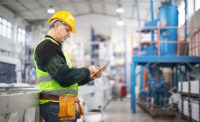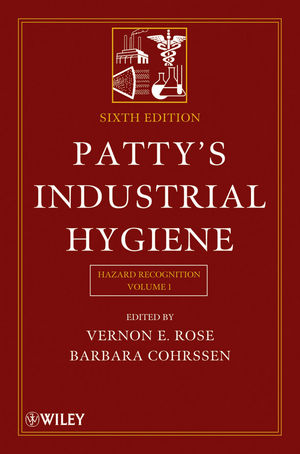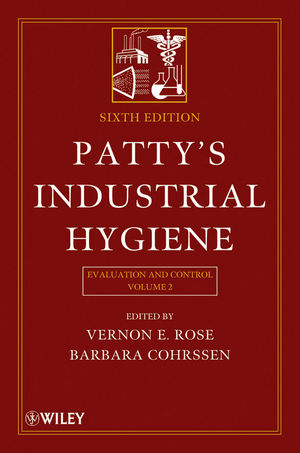How industrial automation can improve workers' safety

We credit industrial automation with productivity, efficiency, and safety gains, citing manual handling reduction and a reduction in musculoskeletal injury as a first-stage safety benefit. Yet, advanced technologies bring new opportunities for improved worker safety beyond manual handling, requiring an adaptation in our safety thinking.
The evolution in technology and safety provides an ever-greater ability to remove workers from dangerous workplaces, provide advanced safety monitoring and enforcement, and use automation in safe design. These advances are on the back of the rise in the capabilities of artificial intelligence (AI), machine learning (ML), and computer vision (CV).
In the medium term, the focus on manual handling must continue. The Liberty Mutual Insurance Workplace Safety Index for 2021 cites manual handling, awkward postures, and repetitive motions in the top ten causes of disabling injuries. The cost estimates to businesses of these three workplace injuries exceed 19.5 billion dollars each year. As automation improves, new ways of assisting workers in reducing manual handling injuries will continue to emerge.
Removal of workers from dangerous places
Yet, four of the top ten in the safety index involve falls on the same level, falls to a lower level, caught in equipment or machines, and struck by an object or equipment. The costs from these injuries total 24.46 billion dollars. At a simplistic level, the next level benefit of automation is to exclude workers from hazardous areas by using robotic equipment, particularly when working at heights or in confined spaces. Yet, hazard reduction through automation offers another less recognized opportunity regarding maintenance interventions.
The complicated nature of maintenance operations has health and safety implications for workers. Therefore, reductions in equipment breakdowns exclude maintenance workers from dangerous situations as much as a robot working at heights does for a stock picker. When automation replaced humans, businesses began losing between 5% and 20% of their new productivity due to equipment failure, requiring frequent maintenance intervention. In effect, we removed one significant safety risk and replaced it with another, although arguably much reduced.
With the latest automated equipment using AI and ML combined with a maintenance philosophy called predictive maintenance, operators of automated systems now have the tools they need to maintain maximum equipment optimization. In prolonging equipment uptime, reducing unscheduled breakdowns provides an exciting opportunity for a commensurate improvement in maintenance personnel safety through planned, scheduled, and controlled intervention rather than an emergency response under production pressure.
Safety monitoring and enforcement
The next stage of evolution in safety technology involves advanced safety monitoring and enforcement. While comprehensive strategies exist that include machine guarding and lockout-tag out (LOTO) processes, both are subject to override or mistakes. While not a panacea, AI, ML, and CV present another layer of safety monitoring and enforcement, providing productivity and safety benefits. Products exist today that provide industry-grade, enterprise-ready computer vision systems linked to AI and ML algorithms. These systems provide automated monitoring, object detection, and activity recognition. When used in a safety application, they recognize activity and predict risky behaviors, activating remedial or preventative actions ranging from alerts or energy isolation to machine shutdown to prevent harm.
Automation in design
One of the latest stages of safety benefits provided by automation is the use of hardware-driven design support. As data complexity has increased exponentially, AI allows design engineers to analyze multiple options affecting safety. Combining robotics with mobile platforms and predictive maintenance requires designers to incorporate multiple, complex safety standards. The use of AI to model predictive failure modes in safety-related control systems while maintaining standard conformity to a high level of confidence is an advance not previously available to designers.
Similarly, software-driven design automation is assisting in rapidly changing automated environments. Once largely static and guarded, today's automated machines are self-propelled and multi-tasked. The variables within such an environment are constantly changing, requiring constant rapid analysis and action. Only AL and ML can provide the real-time predictive response to changed circumstances to protect workers from harm.
Conclusion
As industrial automation has increased worldwide, it has long since moved past providing simple manual handling solutions. Now, a complex, evolving, automated threat landscape presents itself for safety consideration. In design today, we have automation using a convergence of AI, ML, CV and AI informed design to adapt automation to humans. Recognizing a worker's height, whether left or right-handed, and any physical constraints, the automated device will adjust its physical characteristics or task management to suit. As we adapt the way we think about safety, the capabilities of technology provide us with the modern tools and techniques needed to provide exciting advances in the welfare of workers.
Looking for a reprint of this article?
From high-res PDFs to custom plaques, order your copy today!









